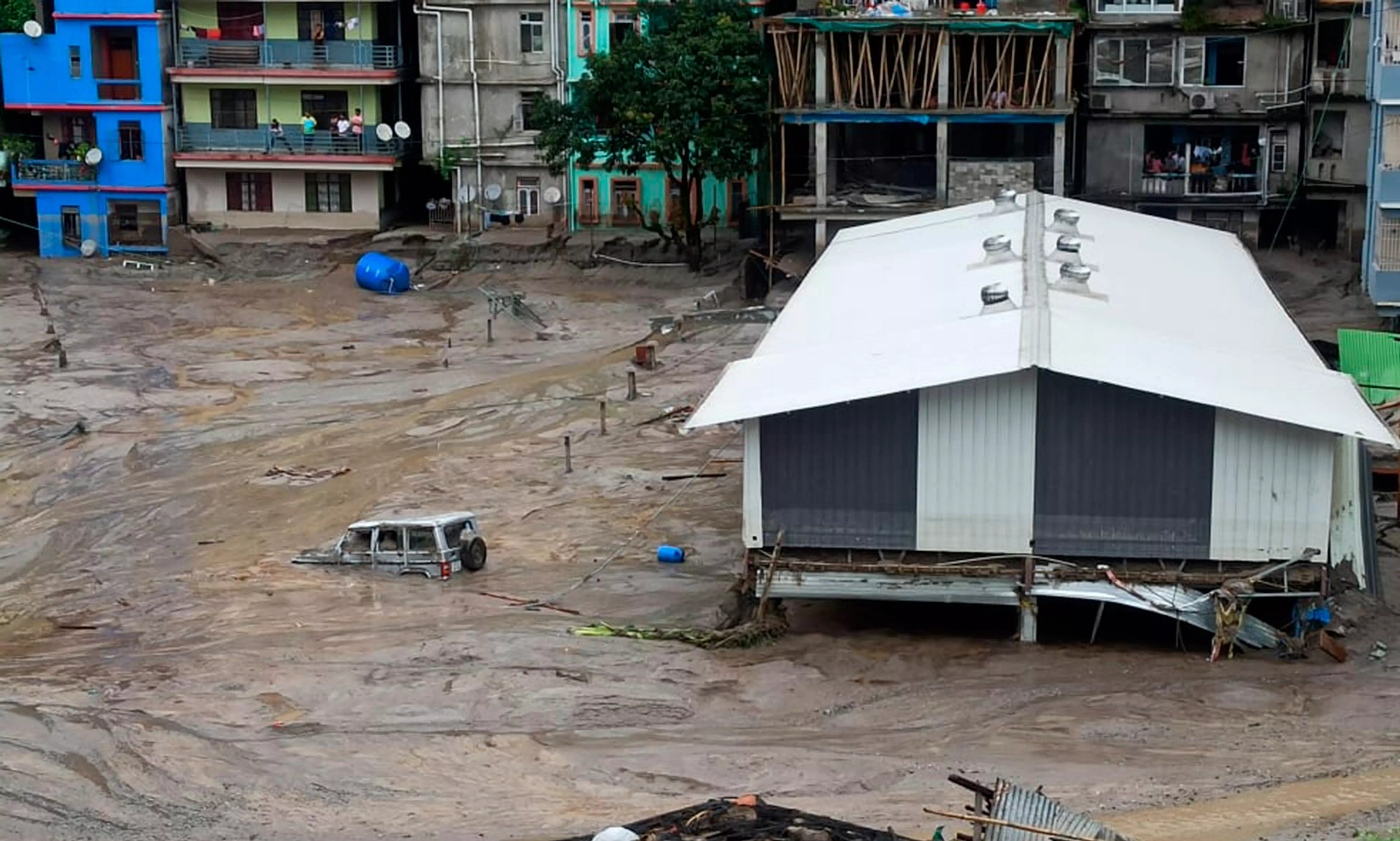
- Home
- India
- World
- Premium
- THE FEDERAL SPECIAL
- Analysis
- States
- Perspective
- Videos
- Sports
- Education
- Entertainment
- Elections
- Features
- Health
- Business
- Series
- In memoriam: Sheikh Mujibur Rahman
- Bishnoi's Men
- NEET TANGLE
- Economy Series
- Earth Day
- Kashmir’s Frozen Turbulence
- India@75
- The legend of Ramjanmabhoomi
- Liberalisation@30
- How to tame a dragon
- Celebrating biodiversity
- Farm Matters
- 50 days of solitude
- Bringing Migrants Home
- Budget 2020
- Jharkhand Votes
- The Federal Investigates
- The Federal Impact
- Vanishing Sand
- Gandhi @ 150
- Andhra Today
- Field report
- Operation Gulmarg
- Pandemic @1 Mn in India
- The Federal Year-End
- The Zero Year
- Science
- Brand studio
- Newsletter
- Elections 2024
- Events
- Home
- IndiaIndia
- World
- Analysis
- StatesStates
- PerspectivePerspective
- VideosVideos
- Sports
- Education
- Entertainment
- ElectionsElections
- Features
- Health
- BusinessBusiness
- Premium
- Loading...
Premium - Events

The minimal funding for climate adaptation in the Modi government’s interim budget is at odds with the principles of climate change planning and social justice
The Interim Budget for 2024-25 once again highlights India’s inadequate focus on climate adaptation. The Budget speech document made no mention of the country’s current climate challenges, including issues such as extreme weather events, and air pollution.
The Ministry of Environment, Forest, and Climate Change (MoEFCC), the nodal ministry for climate change, has been allocated Rs 3,265 crore, an increase of just Rs 34 crore over the revised estimates of 2023-24. This is significantly less than the country’s expectation to incur Rs 57 lakh-crore over the next seven years on adaptation to climate change.
Marginal increases
The National Clean Air Action Programme, a crucial initiative given the rising levels of air pollution across Indian cities, receives a marginal increase of Rs 29 crore over the revised estimates of last year. Surprisingly, programmes such as the Climate Change Action Plan, National Mission on Himalayan Studies, and National Adaptation Fund received no Budget allocation despite their crucial role in climate resilience and adaptation efforts.
The rising sea level already poses a threat to coastal communities along the country’s 7,500 km coastline. The latest IPCC AR6 report indicates that coastal risks will intensify due to human-induced climate change, endangering existing ecology and biodiversity.
The crucial programme National Coastal Mission (NCM) that intended to safeguard the livelihoods of coastal communities, including fisher folks, conserve the coastal stretches and promote sustainable development, received a mere Rs 50 crore. This is significantly less than the estimated loss of Rs 11,000 crore due to only one cyclone in Tamil Nadu last year.
IMD takes a hit
The India Meteorological Department (IMD), received only Rs 537 crore, Rs 3 crore less than the previous year’s revised Budget. It’s important to note that with the escalating frequency of extreme weather events, the significance of IMD’s role has become more crucial. It plays a vital part in issuing early weather warnings for events like tropical cyclones, heavy rains and heat waves, which can lead to destruction of life, and property.
In other news, recently IMD has decided to discontinue the operation of agroment units in 199 districts. These units provide essential and comprehensive weather-related advisories to millions of farmers at the block level, helping them minimise crop losses.
Critical departments for climate disaster response, including the National Disaster Response Force (NDRF), Disaster Management, and the National Cyclone Risk Mitigation Project, faced significant Budget cuts.
Disaster Management saw a reduction of Rs 37.78 crore, and the National Cyclone Risk Mitigation Project received a Budget allocation of only Rs 10 crore. In contrast, the Deep Sea Mission, posing a threat to ocean biodiversity, received Rs 600 crore, marking a Rs 150 crore increase from the previous Budget.
Such fund allocation patterns in the Union Budget to important climate adaptation and mitigation schemes raise concerns about the efficiency and adequacy of resources to address climate crises and ensure the resilience of communities that face the burden of climate risks.
Danger close home
The climate crisis is already hitting our homes. It is causing a devastating impact on people and nature. Extreme weather or climate events such as cyclones, floods, heat waves and drought, have become more frequent and intense in many regions as a consequence of anthropogenic climate change.
According to the Disaster Management Division, India experienced extreme weather events on 314 out of 365 days in 2022. Of these, 214 days saw floods, landslides, or heavy rainfall, 66 days witnessed heatwaves, and 185 days were marked by lightning and storms.
We had 46 days with cold waves in 2022. The country faced a grim toll, with 3,026 deaths, 1.96 million hectares of crop area affected, and 423.3K houses damaged.
According to the State of the Climate in Asia 2021 report published by the World Meteorological Organization (WMO), floods in 2021 caused economic losses amounting to $3.2 billion, approximately Rs 26,268 crore in India. This positioned India as the second-highest in economic losses among Asian nations, trailing only China.
Notable instances include the 2021 floods in Assam, impacting 88 lakh people and leaving a trail of damage estimated at about Rs 10,000 crore. In Kerala, the Post-Disaster Needs Assessment conducted by the United Nations reported a figure of Rs 31,000 crore after the devastating floods in 2018.
Economic impact
A recent report by the Reserve Bank of India, assessing the implications of climate change on the macro-economic scenario, estimated that the country lost a staggering $69 billion due to climate-related events in 2019 alone.
Looking ahead, by 2030, India may account for 34 million of the projected 80 million global job losses resulting from heat-stress-associated productivity decline. McKinsey & Company’s analysis underscores that lost labour from rising heat and humidity alone could potentially impact up to 4.5 per cent of India’s GDP.
Globally, India discusses Common But Differentiated Responsibilities (CBDR), advocating for increased climate finance and compensation for loss and damage from developed countries that historically contributed to climate change.
However, domestically, the government falls short in taking concrete action to safeguard climate-vulnerable communities. A recent study by the Research Institute for Humanity and Nature found that the top 20 per cent of high-expenditure households in India generate nearly seven times the carbon emissions compared to low-expenditure households, defined as those who spend less than $1.9 per day.
Vulnerable groups
We have to understand that climate change doesn’t hurt everyone in the same way.
People who are already struggling, such as those in poverty, living in remote areas, or near the coast, are facing the most severe impacts. Often, these people lack the financial means or resources to cope with the climate disasters. They lose their homes, livelihoods, and at times even their lives, despite not being responsible for causing climate change in the first place.
Thus, it’s important to formulate climate adaptation policies while keeping the most vulnerable in focus. However, the current policies predominantly support the affluent class, focusing on building cities, major infrastructure projects, road and highway projects for elites.
In this year’s Budget itself, the Road and Transport Ministry received Rs 278,000 crore, a 217 per cent increase over the Rs 87,656 crore allocated to the Ministry of Health. This clearly highlights that our Budget allocations do not align with the principles of climate change planning, and social justice.
As this is an interim Budget, and the forthcoming government will announce a new Budget after the election results, it is essential for them to prioritise the principle of CBDR within the country. This will ensure fair and sustainable development.
(The Federal seeks to present views and opinions from all sides of the spectrum. The information, ideas or opinions in the article are of the author and do not necessarily reflect the views of The Federal.)


